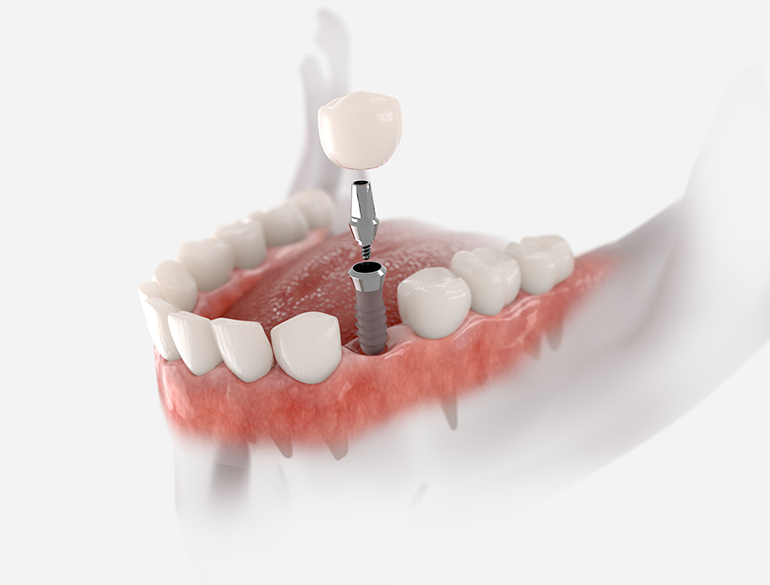The Basic Principles Of Dental Sense
The Basic Principles Of Dental Sense
Blog Article
Top Guidelines Of Dental Sense
Table of ContentsSome Known Facts About Dental Sense.See This Report about Dental SenseEverything about Dental SenseThe Of Dental Sense
are clinical gadgets operatively implanted right into the jaw to recover a person's ability to chew or their look. They offer assistance for man-made (phony) teeth, such as crowns, bridges, or dentures. When a tooth is shed due to injury or illness, a person can experience issues such as rapid bone loss, defective speech, or modifications to chewing patterns that lead to discomfort.Oral dental implant systems contain an oral implant body and oral implant joint and may also consist of an abutment addiction screw. Root canal procedure. The oral implant body is operatively placed in the jawbone instead of the tooth's root. The dental implant abutment is generally connected to the implant body by the joint addiction screw and extends through gums into the mouth to sustain the attached fabricated teeth
(https://zenwriting.net/dentalsense1/nnlwgn0f4v)Framework of The Oral Implant System selecting oral implants, speak with your dental copyright concerning the prospective benefits and dangers, and whether you are a prospect for the treatment. Points to take into consideration: Your overall health is an important consider determining whether you are a good candidate for dental implants, just how long it will certainly take to heal, and how long the implant may remain in location.
Smoking cigarettes might influence the recovery process and lower the lasting success of the dental implant. The recovery process for the dental implant body might take several months or longer, during which time you normally have a short-lived joint instead of the tooth. the oral implant procedure: Meticulously adhere to the oral health instructions provided to you by your oral supplier.
Dental Sense for Dummies
Implant failure can result in the need for an additional operation to fix or replace the implant system. Recovers the ability to chew Brings back aesthetic look Aids maintain the jawbone from reducing because of bone loss Maintains the health of the surrounding bone and gums Aids keep nearby (nearby) teeth steady Enhances quality of life Damage to bordering natural teeth throughout implant placement Injury to the surrounding cells throughout surgery, such as sinus perforation Injury throughout surgery (for instance, fracture of bordering jawbone) Inadequate feature, such as seeming like the teeth do not bite together usually A sensation that the tooth hangs or turning in area resulting from a joint screw loosening up Implant body failure (looseness of the implant body) as a result of systemic infection, which may be most likely in people with unrestrained diabetes because of neighborhood infection in bone and gum tissues supporting the implant body due to postponed recovery, which might be most likely in clients that smoke Trouble cleaning the periodontals around the dental implant, causing bad oral health Neglected gum disease Post-surgical pins and needles because of nerve impingement or damages Always alert healthcare companies and imaging technicians that you have dental implants before any type of magnetic resonance imaging (MRI) or x-ray procedures.
FDA is not aware of any unfavorable events reported for MRI or x-ray procedures with oral implants. Oral implants systems are normally constructed from materials that follow worldwide consensus requirements of the International Organization for Standardization (ISO) or ASTM International. These requirements have details of what makes a secure material.

A dental implant is a structure that replaces a missing tooth. With screw-like gadgets, the surgeon inserts an implant right into the jawbone, and it works as a support for a fabricated tooth, called a crown. A device called an abutment connects the fabricated tooth to the dental implant. The crown is tailor-made to fit the person's mouth and match the shade of their teeth.
Dental Sense Fundamentals Explained
Some individuals are not qualified for oral implant surgical treatment. It is for oral specialists to operate on individuals with: severe illnessuncontrollable metabolic diseasebone or soft cells disease or infectionIf these problems are resolved, check an individual can have the surgery. In, dental surgeons avoid operating on people with: If individuals with any of the above go through oral implant surgery, there is a higher risk of the dental implant falling short.

Dental dental implant surgical treatment is a personalized procedure. Offer you time to heal. Attach the post and final crown, bridge or denture.
Next off, your specialist will thoroughly put the dental implant right into your jaw. Lastly, your doctor will certainly rearrange your gums and shut the incision with stitches. If your dental implant is near the front of your mouth, your dentist will make a temporary tooth for you to wear till you heal. By doing this, you won't have a void in your smile while you recoup.
Dental Sense - Questions
During the recovery stage, your jawbone should fuse to the dental implant. This process can take anywhere from three to nine months.
Once your dental implant heals, your dentist can attach the joint (little port post) and your final restoration (crown, bridge or denture). This generally takes concerning one hour to finish and may need a second minor surgical procedure. You shouldn't really feel any discomfort during your oral implant treatment because your company will utilize medication to numb your gum tissues.
Report this page